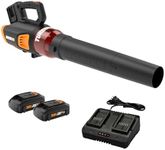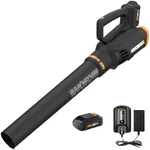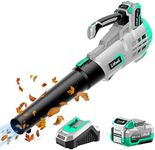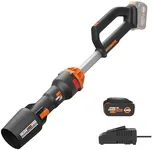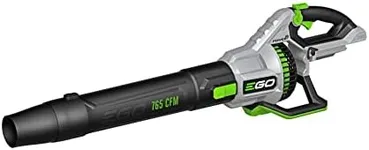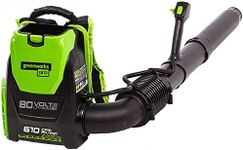Buying Guide for the Best Battery Leaf Blowers
Choosing a battery-powered leaf blower can make yard work much easier and more convenient, especially if you want to avoid the hassle of cords or gasoline. The right model for you depends on the size of your outdoor space, the type of debris you need to clear, and how often you plan to use the blower. Understanding the key features will help you find a blower that matches your needs and makes your outdoor chores more manageable.Battery VoltageBattery voltage tells you how much power the blower can deliver. Higher voltage usually means more blowing force, which is helpful for moving heavier debris or covering larger areas. Leaf blowers typically range from about 18V to 80V. Lower voltage models are lighter and easier to handle, making them good for small yards and light tasks like clearing dry leaves. Higher voltage models are better for bigger yards or tougher jobs, such as wet leaves or pine needles. Think about the size of your yard and the type of debris you usually deal with to decide what voltage is right for you.
Air Speed (CFM and MPH)Air speed is measured in two ways: CFM (cubic feet per minute) and MPH (miles per hour). CFM tells you how much air the blower moves, while MPH tells you how fast the air comes out. A higher CFM is better for moving large piles of leaves, while a higher MPH is good for loosening stuck debris. Light-duty blowers might have around 200-300 CFM and 90-120 MPH, which is fine for patios and small yards. Medium-duty models go up to 400-500 CFM and 120-150 MPH, suitable for most suburban yards. Heavy-duty blowers can exceed 500 CFM and 150 MPH, which is best for large properties or tough debris. Match the air speed to your yard size and the type of cleanup you expect.
Battery Run TimeRun time tells you how long the blower can operate on a single battery charge. This depends on the battery size (measured in amp-hours, Ah) and how hard you run the blower. Shorter run times (10-20 minutes) are fine for quick jobs or small areas, while longer run times (30-60 minutes or more) are better for bigger yards or longer tasks. If you have a large area to cover, look for a blower with a longer run time or consider getting a spare battery so you can swap and keep working.
Weight and ErgonomicsThe weight of the blower affects how comfortable it is to use, especially for longer periods. Lighter models are easier to handle and less tiring, which is important if you have a lot of ground to cover or if you have limited strength. Heavier models may offer more power but can be harder to maneuver. Ergonomic features like comfortable handles, balanced design, and adjustable speed controls can also make a big difference in how easy the blower is to use. Think about how long you’ll be using the blower at a time and choose a model that feels comfortable for you.
Noise LevelBattery leaf blowers are generally quieter than gas models, but noise levels can still vary. Noise is measured in decibels (dB). Lower numbers mean quieter operation, which is important if you have close neighbors or want to avoid disturbing others. If you’re sensitive to noise or live in a quiet neighborhood, look for models with lower decibel ratings. For most users, a quieter blower is more pleasant to use and less likely to cause complaints.
Ease of MaintenanceBattery-powered blowers are usually low-maintenance compared to gas models, but some are easier to care for than others. Look for features like tool-free battery changes, easy-to-clean air filters, and simple controls. If you want a hassle-free experience, choose a model that’s designed for easy upkeep. This will save you time and effort in the long run.


